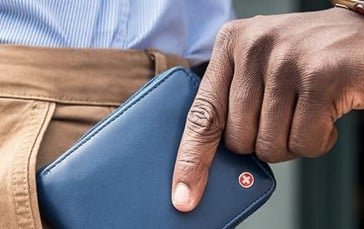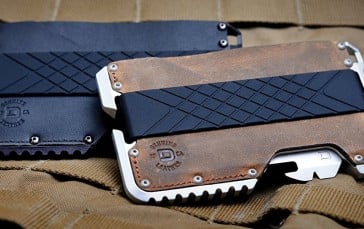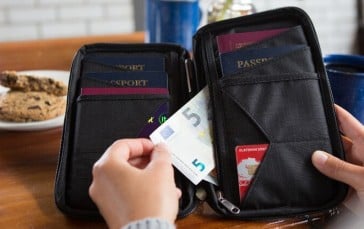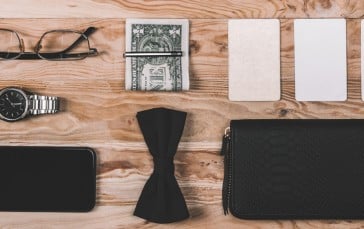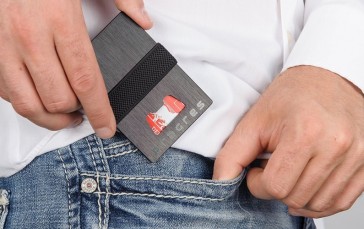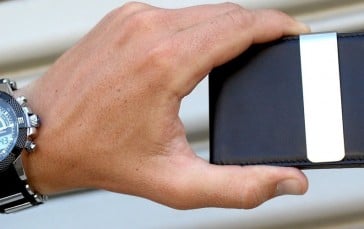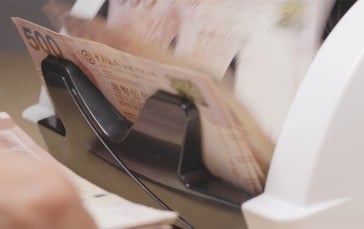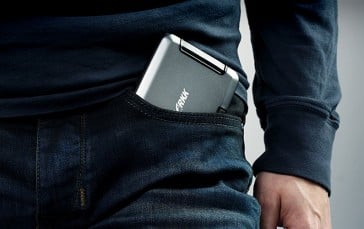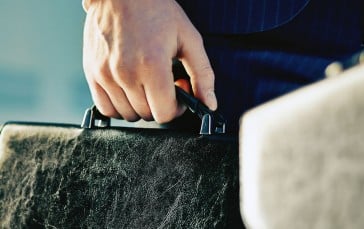What’s in a Wallet?
There are various wallet types, with various shapes and sizes to suit particular styles of dress or lifestyle. Some include security features for travel, lock-on equipment to prevent dropping, or slim-fit styling to keep a pant line straight. Since wallets are carried every day, often for years, it’s important to find the right match.
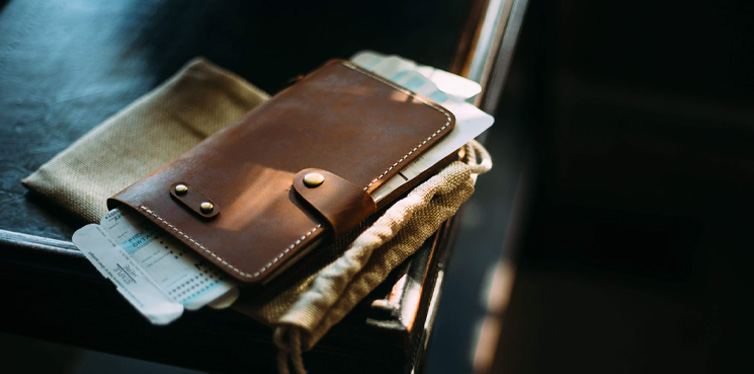
1. Bifold Wallets
Bifold wallets are simple and slim. They fold over in a taco shape, include small interior pockets for cards, and usually a large open pocket for cash. Some also include features like pull tabs that help you slide cards out for easy access.
These wallets are made for people who want a low profile option that can still accommodate everyday essentials, including identification cards, insurance information, cash, and bank cards. They usually don’t have much room for added accouterments like photos, change, or keys, but that’s kind of the point.
2. Trifold Wallets
Thicker than bifold wallets, trifold wallet types fold down into a bulkier package that often contains more space than slimmer options. Within trifold wallets, cards are stored vertically rather than horizontally and can fit in a variety of layouts to accommodate more items. The added real estate of a trifold means that there is more area for essential items when the wallet is open.
However, when loaded up and folded, these wallets can be cumbersome and overly thick. Most people sit on their wallets for long periods of time, so having a thick wallet can be irritating or painful.
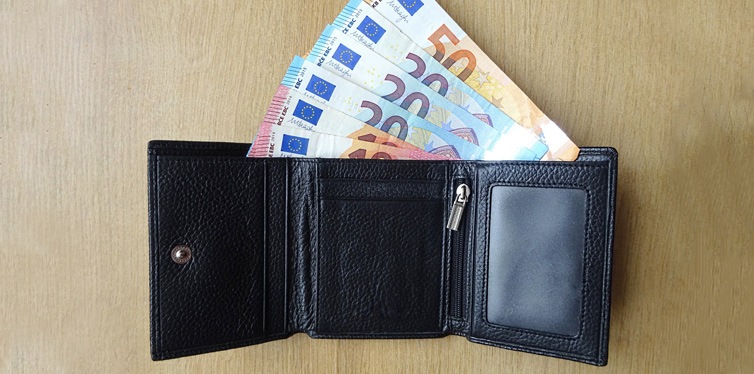
3. Money Clips
Money clips are super minimalistic wallet types made to clamp down on cash and cards, and not much else. If even a bifold wallet feels too chunky, a money clip may be the best option to save space and not have items floating unsecured in your pockets.
Money clips offer a unique advantage over wallets in styling options. You can find them in various metals, with interesting inlays or designs that are unique and eye-catching.
Since nothing is surrounding the clip, however, they can become a bit of a security issue. Cash held in a money clip is easy to spot, and things can slip out if they are not made to the right quality standards.
4. Cell Phone Wallets
It’s safe to say nearly everyone is already carrying their phone 24/7, so why not just wrap it in a wallet and keep it secure with all your other items? Cell phone wallets keep everything you need to carry in one place. That means you have extra space in your other pockets for different everyday carry items.
While they save space and keep everything together, these wallets can make it difficult to use your phone, especially for texting or games. They also add to the risk of losing items, as you are more likely to pull the wallet in and out of your pocket more frequently to use your phone.
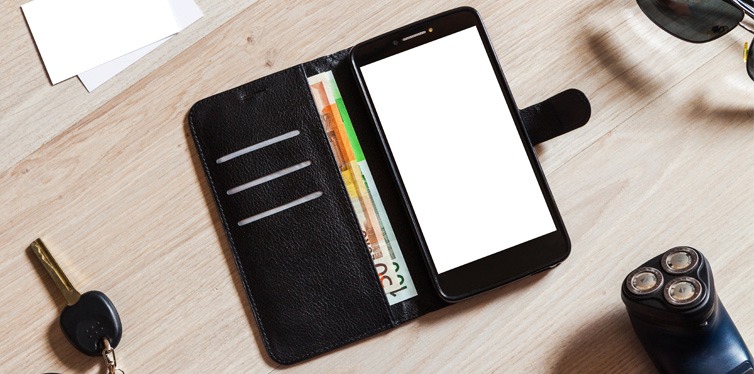
5. RFID Blocking Wallets
It’s easy to find wallet types, in every style, equipped with RFID (Radio Frequency Identification) blocking technology, which can prevent skimming materials inside, like identification cards and passports. RFID wallets are good options for travelers wary of their surroundings in places like airports or other hubs.
They are usually similarly priced to their counterparts, so you don’t have to worry about wasting money on the feature if you’re not sure you really need it.
6. Chain Wallets
Remember how cool guys looked in the 90s with a chain hanging from their back pocket? Neither do I. But hear me out, chain wallets that fasten the wallet to a belt with a button clip could have a place in your wardrobe, especially if you ride motorcycles or have a job that requires a lot of movement and bending.
Chain wallets are generally long and don’t fold. They often include button snaps and zippers to lock items inside. These are great if you’re rumbling down the highway on a bike. There’s nothing worse than pulling up to a gas station to reach back and find nothing.
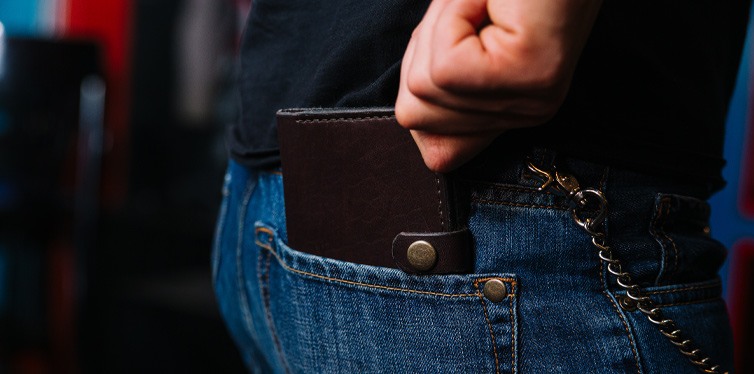
7. Hipster Wallets
Hipster wallets are similar to bifold wallets but are generally slightly larger. Like their bifold counterpart, they have space for identification and bank cards, and cash.
Cards held in these wallets are typically more spaced out, creating a thinner profile. Some also include an inner leaf that provides more storage space but can beef up the wallet’s profile.
8. Long Wallets
If you wear a suit to work or regularly attend formal functions, a long wallet is a great wallet type to protect the crisp lines of your attire. Long wallets are made to fit into a coat pocket. Their added length allows a carrier to hold unfolded cash and cards in a spacious layout that won’t deform your pocket.
These are also great at preventing wear and tear on clothing in which they sit, which is always a bonus for high-dollar, tailored clothing.
Sources:
- What is RFID and How Does RFID Work? – AB&R (American Barcode & RFID)
- How to Carry Long Wallets Like a Pro—A Men’s Wallet Style Guide – The Best Wallet for You


